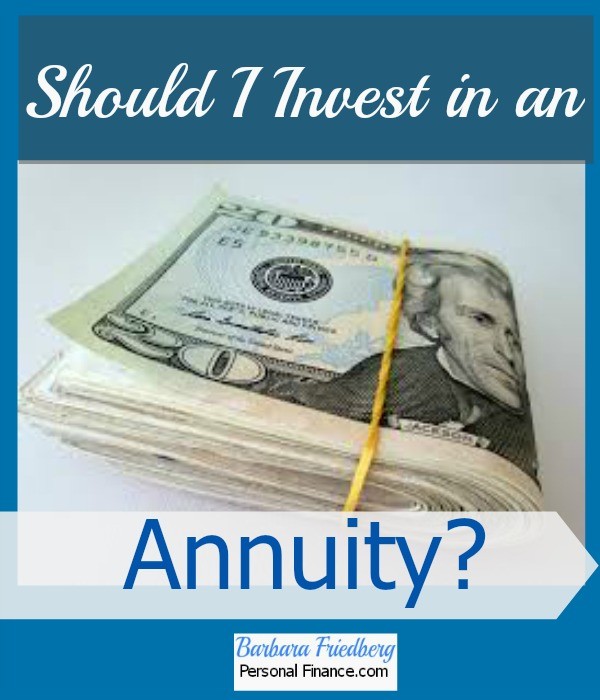Should You Wait to Buy An Annuity Investing Daily
Post on: 13 Апрель, 2015 No Comment

By Bob Carlson on December 21, 2012
In the pursuit of guaranteed lifetime income and replacements for employer pensions, many people are looking at annuities. Economists recommend them, and Ive advised that many people put a portion of their nest eggs into annuities. But, since interest rates are low and likely to remain low through 2015 under Federal Reserve policy, annuity payouts are lower than they were a few years ago. That raises the question: Does it make sense to wait for interest rates to rise before buying an annuity?
Were talking in this post only about immediate annuities. These are old-fashioned annuities in which you pay the insurer a lump sum, and it begins making a stream of payments to you. The payments could last the rest of your life, the joint life of you and your spouse, a term of years, or the longer of a term of years and the rest of your life. The payment schedule is your choice.
Immediate annuities provide certainty and transfer risk. The insurer guarantees a stated amount of income, and it arrives every month or quarter. The insurer takes the risk of lower-than-expected investment returns, and it takes the risk youll live much longer than expected.
People are wary of purchasing immediate annuities. They dont want to give up control of part of their nest eggs or the ability to tap into it beyond the regular payments if they need to. They dont believe transferring the risks of low investment returns and a long life is sufficient to make up for those disadvantages.
Todays low interest rates, however, are whats really keeping many people from putting part of their nest eggs into annuities. The Federal Reserve isnt going to keep interest rates near zero forever. People dont want to lock in an annuity payout today and if waiting a few years would result in a substantially higher payout.
That line of reasoning could cost you a lot of lifetime income, according to an analysis by Joe Tomlinson writing on Advisor Perspectives.com.
To determine if waiting to buy an annuity is a good idea, you have to make three assumptions. First, when do you think interest rates will rise and by how much? The Fed says it will keep rates low for a while. Even when rates start to rise, they arent likely to spike up quickly to pre-crisis levels. Theyll rise gradually. The economy still will be fragile and would decline quickly if rates were to rise quickly.
Second, how much will that change payouts on annuities? Insurers generally pay attention to yields on intermediate investment-grade bonds and mortgages. These could change less quickly or to a smaller extent than the short-term rates controlled by the Fed. Also, insurers use multi-year forecasts of rates, so it could take a while before they factor in substantially higher rates. In fact, the spread between treasury rates and corporate bond rates now is higher than before the crisis from 2003 to 2007. So, annuity payouts might not increase by much as short-term rates start to rise.
Third, and perhaps most important, what will you earn on your money while waiting to buy an annuity? If you set aside the money designated for an annuity purchase in a safe investment to ensure the full principal is available when youre ready to buy, you wont earn much. But if you seek higher returns, your return could be negative.
The key to deciding whether or not to wait for higher rates depends on the difference between what youll earn on the money while waiting and what the insurer would pay you from an annuity purchased today, multiplied by the time youre earning that lower amount. Thats the cost of waiting, and the higher annuity payout down the road has to more than make up that gap for waiting to make sense.
Tomlinson assumes a person would earn a blended rate of 1.5% on his money during the waiting period, which is a generous assumption. He gathered payout rate assumptions from an annuity information service. Then, he computed how long it would take for waiting to buy the annuity to pay off under different interest rate increase assumptions. He found that for a 65-year-old, payout rates on the annuity would have to increase by two percentage points within 5.4 years for waiting to be a break-even decision. If rates rose earlier or higher, waiting would pay off faster. But if it took longer for rates to rise at least 2%, waiting would result in lower lifetime income. For an older person, interest rates have to increase faster for waiting to pay off.
Interest rates dont have to increase as much or as quickly for waiting to make sense when you earn more on your invested money. But youll have to take more risk to do that, and that means your returns could turn out to be less than 1.5% if the markets go against you.
If youre sold on putting part of your nest egg in an annuity but are considering waiting for a higher yield, take a careful look at your assumptions. Unless while waiting you earn close to what the annuity would pay, then you probably lose money by waiting unless rates rise sharply and that increase is reflected in annuity payouts. Under the most likely scenarios, youll lose money by waiting.
Ive recommended waiting until age 70 or later to purchase annuities, because an older person receives a higher payout. This analysis doesnt change that recommendation. Waiting for a higher age-related payout still is a good idea. But waiting even longer in the hope higher interest rates will cause a higher payout probably will cost you money.














